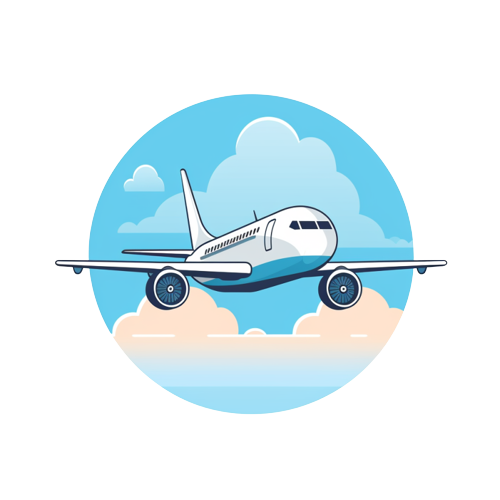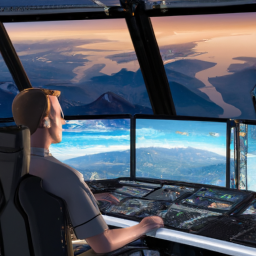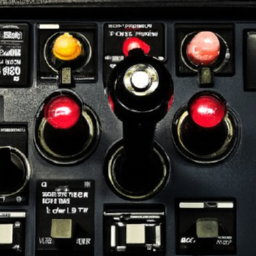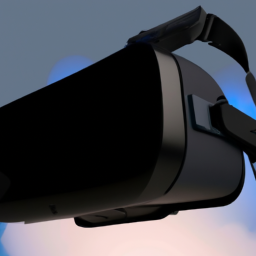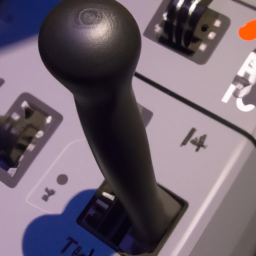In this article, we will explore the advantages of utilizing multi-screen setups for flight simulation. We will discuss how these setups enhance realism and immersion, allowing you to have a more authentic flying experience. Additionally, we will delve into the improved situational awareness and increased field of view that multi-screen setups offer, enabling you to better navigate the virtual skies. Lastly, we will touch upon the potential for enhanced productivity and learning opportunities that come with utilizing multiple screens in your flight simulation setup.
Increased Realism
Flight simulation has come a long way over the years, and one of the major advancements that have contributed to its realism is the use of multi-screen setups. These setups offer several benefits that greatly enhance the immersive experience of flight simulation.
Wider Field of View
One of the key advantages of using multiple screens for flight simulation is the wider field of view it provides. Instead of being limited to a single monitor, you can now extend your view across multiple screens, giving you a more realistic perspective of the environment.
With a wider field of view, you can see more of the scenery and landmarks as you fly, creating a more immersive and realistic experience. Whether you are soaring high above the mountains or navigating through a busy city, the extended view provided by multi-screen setups allows you to fully appreciate the beauty and complexity of the simulated world.
Enhanced Spatial Awareness
In real-life flying, pilots rely on their spatial awareness to navigate and maintain control of the aircraft. Multi-screen setups help replicate this spatial awareness by providing a more accurate representation of the aircraft’s surroundings.
With multiple screens displaying different angles and perspectives, pilots can have a better understanding of their position in relation to the surrounding objects. This enhanced spatial awareness allows for more precise maneuvering and enables pilots to make more informed decisions during critical moments in the simulation.
Realistic Cockpit Representation
Another significant benefit of multi-screen setups is the ability to create a realistic cockpit representation. By extending the screens to fill the peripheral vision of the pilot, the cockpit view becomes more immersive and true to life.
With a realistic cockpit representation, pilots can fully immerse themselves in the simulation, feeling as though they are actually sitting in the cockpit of a real aircraft. This level of realism enhances the overall flight experience and allows pilots to practice their skills in a more authentic environment.
Improved Immersion
Flight simulation is all about creating a sense of presence and immersion, and multi-screen setups play a crucial role in achieving this.
Greater Sense of Presence
When you sit down in front of a multi-screen setup for flight simulation, you instantly feel more connected to the virtual world. The extended view, coupled with the realistic cockpit representation, creates a greater sense of presence and makes you feel like you are actually flying.
The increased visual immersion provided by multi-screen setups allows you to forget about the real world for a while and fully immerse yourself in the virtual environment. You become more engaged with the simulation, which ultimately enhances your overall experience and enjoyment.
Enhanced Sensory Feedback
Flight simulation is not just about the visuals; it also involves other sensory feedback, such as sound and touch. Multi-screen setups can enhance these sensory elements, further increasing the immersion.
With multiple screens, you can position speakers strategically to create a more immersive audio experience. The sound of the engine, the wind rushing past, and the communication from the air traffic control become more realistic and enveloping.
Additionally, some multi-screen setups come with tactile feedback devices that provide a sense of touch and vibration. These devices simulate the feeling of the aircraft’s controls, such as the vibrations of the control surfaces or the resistance of the flight yoke. This adds another layer of immersion, making the simulation even more believable.
Immersive Audio Experience
The audio experience is another area where multi-screen setups excel. By using multiple speakers placed strategically around the room, you can create a more realistic and immersive sound environment.
Imagine flying through a thunderstorm in the simulation, with the sound of rain pouring down and thunder rumbling all around you. With a multi-screen setup, the audio is not just confined to a single set of speakers; it is spread out across the room, adding another level of realism to the experience.
Better Situational Awareness
Situational awareness is crucial for pilots in real-life flying, and the same applies to flight simulation. Multi-screen setups provide several advantages that enhance situational awareness and enable pilots to make better decisions during their virtual flights.
Expanded Peripheral Vision
One of the most significant benefits of multi-screen setups is the expanded peripheral vision they offer. Instead of being confined to a single monitor, pilots can now see a wider area around the aircraft, simulating the natural peripheral vision they would have in real-life flying.
This expanded peripheral vision allows pilots to spot other aircraft, obstacles, or important cues without having to rely solely on the instruments. It enables them to better understand their spatial awareness and make more accurate judgments about their position and surroundings.
Improved Navigation
Navigation is a critical aspect of flying, and multi-screen setups can greatly enhance the navigational experience in flight simulation. With multiple screens displaying different views, pilots can have a more comprehensive picture of their route and the surrounding airspace.
For example, one screen can be dedicated to the primary flight display, showing the flight instruments and navigation information. Another screen can be used for displaying a moving map or an external view, allowing pilots to have a visual reference of their route.
By having multiple screens dedicated to different aspects of navigation, pilots can quickly and efficiently access the information they need, improving their situational awareness and making navigation easier and more accurate.
Increased Awareness of Surroundings
In real-life flying, pilots constantly scan their surroundings for potential hazards or other aircraft. Multi-screen setups replicate this aspect of situational awareness by providing a more comprehensive view of the virtual environment.
With multiple screens displaying different perspectives, pilots can easily glance between the screens to check for other aircraft, obstructions, or any other potential threats. This increased awareness of the surroundings helps pilots make better decisions and avoid potential conflicts or accidents during the simulation.
Enhanced Training and Skill Development
Flight simulation is not just for entertainment; it is also a valuable tool for training and skill development. Multi-screen setups offer several advantages that can greatly enhance the effectiveness of flight training.
Simulating Complex Scenarios
Flight training often involves practicing complex scenarios, such as instrument approaches, emergency procedures, or flying in adverse weather conditions. Multi-screen setups enable a more realistic simulation of these scenarios, providing a valuable training tool for pilots.
With multiple screens displaying different aspects of the simulation, pilots can fully immerse themselves in the training scenario. Whether it’s flying through thick clouds or dealing with a simulated engine failure, the extended view and enhanced immersion provided by multi-screen setups help pilots develop the necessary skills and confidence to handle such situations in real life.
Developing Pilot Skills
Flight simulation is an excellent platform for developing and honing pilot skills. Multi-screen setups enhance this process by providing a more authentic and immersive training experience.
By replicating the real-world cockpit environment and offering a wider field of view, multi-screen setups help pilots practice their situational awareness, instrument scanning, and decision-making skills. They allow pilots to develop muscle memory for control inputs and practice the precise hand-eye coordination required for safe and efficient flying.
With multi-screen setups, pilots can engage in repetitive practice sessions, refining their skills and building up their confidence. This level of realistic training is invaluable for both aspiring pilots and seasoned aviators looking to stay sharp.
Practicing Emergency Procedures
Emergency procedures are an essential part of pilot training, and multi-screen setups can greatly enhance the effectiveness of practicing these procedures.
With multiple screens displaying different aspects of the aircraft’s systems and the surroundings, pilots can simulate various emergency scenarios and practice the necessary procedures. They can simulate engine failures, electrical system malfunctions, or any other critical event and go through the appropriate checklists and responses.
Multi-screen setups provide an immersive environment for practicing emergency procedures, allowing pilots to develop the necessary knowledge, muscle memory, and response times required to handle such situations in real-life flying.
Increased Efficiency and Productivity
Flight simulation is not just about honing flying skills; it can also benefit pilots in terms of efficiency and productivity. Multi-screen setups offer several advantages that can help pilots become more efficient in their work and improve their overall productivity.
Faster Decision Making
In real-life flying, pilots often need to make split-second decisions that can significantly impact the safety and efficiency of the flight. Multi-screen setups can help develop and improve the pilot’s decision-making skills by providing a more realistic and immersive environment for practicing decision-making under pressure.
With multiple screens displaying different relevant information, pilots can quickly assess the situation and make informed decisions. Whether it’s selecting the appropriate landing runway, choosing the best aircraft performance settings, or reacting to air traffic control instructions, multi-screen setups allow pilots to practice their decision-making skills in a realistic and challenging simulation.
Improved Workflow
For pilots who use flight simulation as a tool for their profession, multi-screen setups can significantly improve their workflow. Instead of constantly switching between different windows or monitors, pilots can have all the necessary information readily available on multiple screens.
For example, one screen can display the flight plan and weather information, while another can show the primary flight display and navigation instruments. This arrangement allows pilots to keep important information at their fingertips, reducing the time spent searching for information and improving their overall workflow.
Enhanced Time Management
Flight simulation often involves time-critical tasks, such as flight planning, pre-flight checks, or managing air traffic control communications. Multi-screen setups can enhance time management by allowing pilots to allocate different screens for different tasks.
By dedicating certain screens to specific tasks, pilots can manage their time more efficiently and prioritize their workflow. They can have a screen dedicated solely to the communication with air traffic control, ensuring that they don’t miss critical instructions. Another screen can be used for monitoring weather conditions or reviewing the flight plan.
With multi-screen setups, pilots can optimize their time management, improving their efficiency and productivity during the simulation.
Reduced Workload and Stress
Flying can be demanding and stressful, both in real life and in simulations. Multi-screen setups can help reduce the workload and stress associated with flight simulation, providing a more enjoyable and balanced experience.
Distribution of Information
One of the main advantages of using multiple screens is the ability to distribute information across different displays. Instead of cramming all the information onto a single screen, pilots can spread it out across multiple screens, reducing the cognitive load and making it easier to process information.
By distributing the information, pilots can avoid information overload and focus on the most critical aspects of the simulation. This not only reduces the workload but also helps prevent the feeling of being overwhelmed, which can lead to stress and diminished performance.
Reduced Mental Fatigue
Staring at a single screen for an extended period can be mentally fatiguing and can impact the overall enjoyment of flight simulation. Multi-screen setups can help reduce mental fatigue by providing a more dynamic and visually engaging experience.
With multiple screens displaying different views, pilots can naturally shift their focus and engage different parts of their brain. This variety in visual stimulation can help alleviate mental fatigue and keep the simulation experience fresh and engaging for longer periods.
Additionally, the wider field of view provided by multi-screen setups reduces the strain on the eyes, minimizing eye fatigue and allowing pilots to fly for more extended periods without discomfort.
Improved Work-Life Balance
For many flight simulation enthusiasts, finding the right balance between their hobby and other responsibilities can be a challenge. Multi-screen setups can help strike that balance by providing a more efficient and enjoyable simulation experience.
With the improved efficiency and reduced mental fatigue offered by multi-screen setups, pilots can get more out of their simulation sessions in less time. This allows them to enjoy their hobby without sacrificing precious time and energy that could be allocated to other areas of their life.
By enabling a more productive and enjoyable flight simulation experience, multi-screen setups contribute to a healthier work-life balance, ensuring that pilots can pursue their passion without compromising their other commitments.
Cost-Effective Alternative
Flight simulators and training devices can be expensive, often out of reach for many enthusiasts. Multi-screen setups offer a more cost-effective alternative that still provides many of the benefits of these high-end simulators.
Affordable Multiple Monitor Setup
Setting up a multi-screen setup for flight simulation can be much more affordable compared to investing in a dedicated simulator. Instead of purchasing an expensive simulator, you can use multiple off-the-shelf monitors and the necessary hardware to create a multi-screen setup that suits your needs and budget.
With advances in display technology, monitors have become more affordable, offering higher resolutions and better color accuracy. This affordability makes it easier for flight simulation enthusiasts to create their multi-screen setups without breaking the bank.
Replacement for Expensive Simulators
Multi-screen setups can also serve as a viable replacement for expensive flight simulators. While the realism and accuracy of high-end simulators may still be unmatched, multi-screen setups can provide a similar level of immersion and training value at a fraction of the cost.
For many flight simulation enthusiasts, the benefits provided by multi-screen setups are more than sufficient for their needs. Whether it’s for personal enjoyment or skill development, multi-screen setups offer a cost-effective alternative that can provide a highly realistic and immersive flight simulation experience.
Flexible Configuration Options
Another advantage of multi-screen setups is their flexibility. Unlike dedicated simulators that often have limited customization options, multi-screen setups allow for a high degree of configuration and customization.
You can choose the number and size of the screens based on your preferences and the available space. You can also configure the screens to display different views, instruments, or perspectives, allowing you to create a personalized setup that suits your specific needs and requirements.
This flexibility ensures that you can create a multi-screen setup that aligns with your budget, available space, and desired level of realism. It allows for further customization and adaptability as your needs and priorities change over time.
Potential for Collaboration and Teamwork
Flight simulation is not always a solo activity; it can also serve as a platform for collaboration and teamwork. Multi-screen setups offer several advantages that enable pilots to work together and enhance their learning experience.
Multi-Pilot Training
Multi-screen setups can facilitate multi-pilot training, allowing multiple pilots to participate in the same simulation. With each pilot having their own set of screens, they can work together to plan and execute flight missions, practice procedures, or simulate complex scenarios.
This collaborative training environment fosters teamwork and communication skills, as pilots need to coordinate their actions and make joint decisions. It also allows for the sharing of knowledge and experiences, boosting the collective learning of the group.
Crew Resource Management
In real-life flying, crew resource management (CRM) is essential for safe and efficient operation. Multi-screen setups can help simulate CRM scenarios, allowing pilots to practice their teamwork and communication skills.
By dedicating different screens to different crew members, pilots can simulate the coordination and cooperation required in a multi-crew environment. They can practice sharing information, delegating tasks, and making joint decisions, all within the context of a realistic and immersive simulation.
Multi-screen setups provide a valuable tool for developing and refining the CRM skills required for professional aviation, whether it’s for airline pilots, military aviators, or private flight crews.
Shared Experiences and Feedback
Flight simulation is not just about practicing flying skills; it’s also about sharing experiences and gaining feedback from others. Multi-screen setups can facilitate this by allowing pilots to share their screens with others, creating a shared experience and fostering discussion and feedback.
With multiple screens displaying different perspectives, pilots can showcase their flights or specific maneuvers to others. They can receive feedback, exchange tips and tricks, and learn from each other’s experiences. This collaborative learning environment enhances the overall flight simulation experience and promotes continuous improvement.
Adaptability and Customization
Multi-screen setups offer a high degree of adaptability and customization, allowing pilots to tailor their flight simulation experience to their specific needs and preferences.
Adjustable Display Layout
One of the significant advantages of multi-screen setups is the ability to adjust the display layout based on personal preferences and requirements. Pilots can rearrange the screens to suit their field of view, ensuring they have the optimal view of the simulation.
Whether it’s a panoramic view that extends the scenery across multiple screens or a focused setup that prioritizes the instruments and critical information, pilots can configure the display layout to match their individual flying style.
Compatible with Various Flight Simulation Software
Multi-screen setups are compatible with a wide range of flight simulation software, ensuring that pilots can easily integrate their preferred software into their setup. Whether it’s a commercial flight simulator or a specialized training program, multi-screen setups can accommodate various software options.
This compatibility allows pilots to take advantage of the latest advancements in flight simulation software while still enjoying the benefits of their multi-screen setup. It ensures that pilots can access a vast library of aircraft and scenarios, further enhancing the realism and versatility of their flight simulation experience.
Support for Multiple Aircraft Types
Flight simulation enthusiasts often have a passion for different types of aircraft, from small light aircraft to large commercial jets or military fighters. Multi-screen setups can accommodate this diversity by providing support for multiple aircraft types.
By configuring the displays and instrument panels accordingly, pilots can easily switch between different aircraft during their simulation sessions. Whether they want to practice cross-country navigation in a small propeller plane or perform precision landings in a jumbo jet, multi-screen setups enable them to adapt their setup to simulate a wide range of aircraft.
Conclusion
Multi-screen setups offer a range of benefits for flight simulation enthusiasts. From increased realism and immersion to improved situational awareness and training, these setups provide a more authentic and effective flight experience. Additionally, they offer cost-effective alternatives to expensive simulators and enable collaboration and customization.
Whether you’re a casual flight simulation enthusiast looking to enhance your enjoyment of the hobby or a professional pilot seeking to improve your skills and efficiency, multi-screen setups can take your flight simulation experience to new heights. By investing in a multi-screen setup, you can create a more immersive, realistic, and rewarding environment for your virtual flights.
